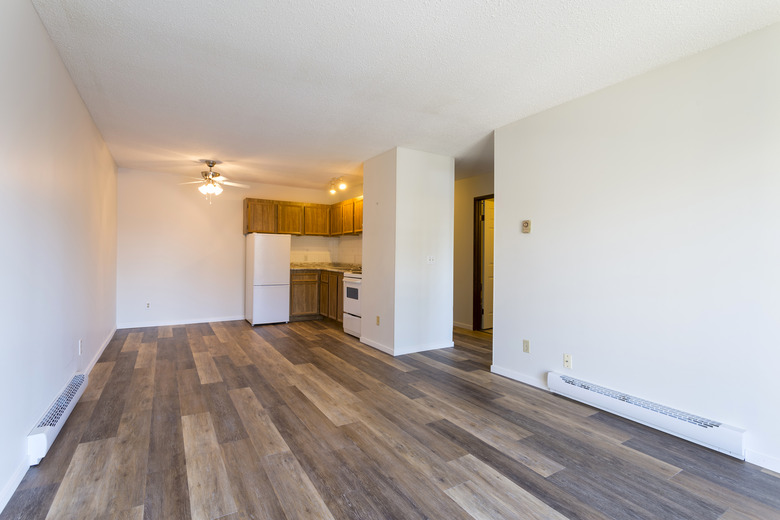How To Purge The Air From Hot Water Baseboard Heating Pipes
We may receive a commission on purchases made from links.
The radiant heat from hot water baseboard heaters depends on the circulation of hot water, but when air gets into the pipes, water can't circulate, and some of the heaters in the system won't get warm. There's more than one reason for heaters to stay cool. A telltale sign that an airlock is responsible is that some of the heaters will warm up while some of them won't. If only one heater is staying cool, test the operation of the thermostat for that heater to make sure it's working before suspecting an airlock, and if all the heaters stay cool, there's probably something wrong with the boiler or the circulation pump.
Use the Bleeder Valves
Use the Bleeder Valves
When the pipe in a baseboard heater gets air-bound, the air forms a bubble in the pipe that prevents water from flowing, and the heater stays cool. If the heater has a bleeder valve, you can usually use it to release the air. You'll find the bleeder valve at one end of the heater at the point where the water pipe rises from the floor, often behind an access cover. To open the valve, you may need a flat-head screwdriver or a radiator air bleeder key to turn the valve nut, but some valves have handles and don't require a key.
For bleeding to work, the boiler has to be on, and the water must be circulating, so be careful because the air coming out of the valve will be hot. Put on rubber gloves and put a bowl underneath the valve to catch water. Then, slowly open the valve until air begins to hiss out. Close the valve when the air is replaced by a steady stream of water.
Use the Water Feeder and Boiler Drain
Use the Water Feeder and Boiler Drain
Some hydronic heaters don't have bleeder valves, in which case you have to purge air from the boiler. Before you do this, turn off the power to the boiler and confirm that some but not all of the heaters in the system are cold. After you confirm this, the procedure for purging the boiler is as follows:
- Connect a garden hose to the boiler drain and run it outside to a place where it's safe for water to drain. Open the drain and let water begin flowing.
- Open the feeder valve to let water into the boiler at house pressure. Be mindful of system pressure reading on pressure gage on boiler. Too much pressure (typically 30 PSI) will pop the relief valve. You should hear spurts coming from the hose, which means air is coming out of the drain along with the water.
- Close the feeder valve when the spurts stop and there is a steady stream of water flowing from the hose.
- Close the drain immediately after closing the feeder valve. If the feeder valve is automatic, water will continue to flow until the pressure in the boiler reaches the value it's supposed to be when the water is cold, which is typically 12 psi. If the pressure goes above this, open the drain and let water out until the pressure falls sufficiently. Watch the pressure after shutting the drain for a little while. Sometimes the automatic feeder can stick allowing system to overfill and pop the relief valve.
Test the System After Purging Air
Test the System After Purging Air
After you've purged air from the boiler, turn on the system by turning on the boiler and turning up the thermostat to call for heat. Double-check the circulation pump to make sure it's working and then check each heater to make sure it's reaching the proper temperature. If any heaters are still cold, you probably didn't purge all the air, so repeat the procedure. If you still can't get the heaters to warm up, it's probably time to call in a pro.
